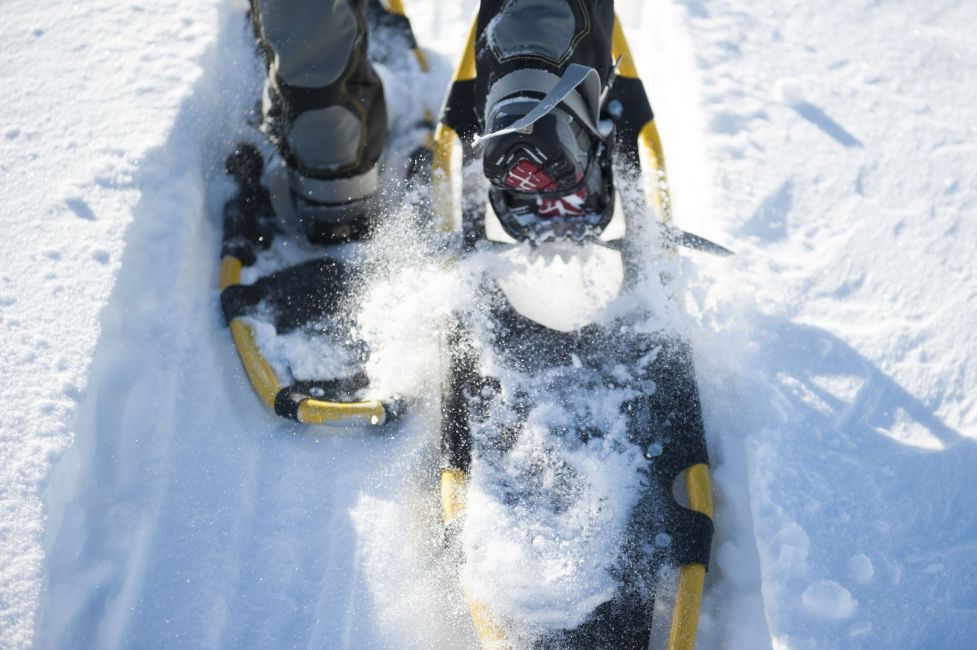Hard to believe that a slab of wood from Central Asia was the first archeological evidence of snowshoes, used by migrants to cross the Aleutian Land Bridge to present day North America some 6,000 years ago! It is so interesting to follow the evolution of the snowshoe. The forerunner of the laced wooden traditional, aka “Trad”, snowshoes designed by the First Nations, have evolved to the metal or plastic technical, aka “Techy”, snowshoes of today!
Trad snowshoe design lead to the peak of craftsmanship, as an object of beauty and a tool for survival for the First Nations. Designs were based on the specific environment and needs. The best wood used was white ash since it was strong, lightweight and bent well after steaming. Then it was laced with rawhide “babiche” when moist, so it dried to shrink making it taut. The frame and lacing were varnished to protect from moisture. Babiche has now been replaced with neoprene, which isn’t affected by moisture but heavier. Here are a couple of design examples, of which are still used to this day:
-The Yukon is best for open country and deep powder with a high turn up of the toe and long tails. These are heavy at a 25-28cm/10-11” width and a 106-117cm/42-62” length, so work well for big people and big loads! Definitely not used for mountain travel as you’d have to be a beast to try to step kick uphill!
-The Beavertail is generally flat with a toe rise and a long tail, making it a much better option in the mountains. At 25-51cm/10-20” wide and 76-122cm/30-48” long, these work great for step kicking uphill, navigating dense brush and for flotation in the POW!
In 1930, the world’s largest Trad snowshoes were made in Maine at 2m/6’ long, 30cm/1’ wide for a 181kg/400lb man! The factory worked overtime to make these for hunters, lumbermen and trappers to bear the weight they’d carry for their work. That’s when men were men!
Trad snowshoes can be heavy and can break, so the lighter Techy snowshoes have evolved to be more durable and easier to use. The premise is still the same: to disperse the body weight to a larger area so you don’t sink in the snow. Techy snowshoe designs range from compact snowshoes with short crampons underfoot for racing on set tracks, to larger snowshoes with claw-like crampons underfoot and heel lifts for climbing up mountains. Bindings are a whole ‘nother animal from simple webbing to ‘super tech’ ratchet bindings with cables. Be wary of the ‘super techs’ as many freeze up in snowy conditions, making the end of your day a challenge to get out of them…and usually in frigid temps! These are the 'shoes we use' on our deep powder guided Banff snowshoeing program Snowshoe on Top of the World. Or if you are looking for a self-guided adventure, visit our rental location at 202 Bear Street for snowshoe rentals.

From Trad to Techy snowshoes, know that the history runs deep in the POW of Banff snowshoeing!
Kristi Beetch
Guide - White Mountain Adventures
ACMG: Day Hiking Guide
Interpretive Guides Association: Professional and Master Interpreter